How to Run with a Backpack: Run Farther, Run Stronger, Run Better
Mastering how to run with a backpack is crucial for those seeking efficient workouts and adventure enthusiasts. Enhance your fitness journey while maintaining balance, stride, and comfort during runs, making each step count towards your goals.

In a world where trail running enthusiasts constantly seek fresh horizons, the fusion of trail running and backpack challenges has emerged as an exhilarating pursuit.
Have you ever wondered How to Run with a Backpack to endure and thrive on rugged paths? As the demand for this dynamic blend grows, the need for a definitive guide becomes undeniable.
Are you prepared to elevate your trail running game, conquer new heights, and embrace the transformative journey that awaits? Let’s embark together on the path to unravel the secrets of successful backpack-infused runs.
Table of Contents
ToggleBenefits and Importance of Running with a Backpack
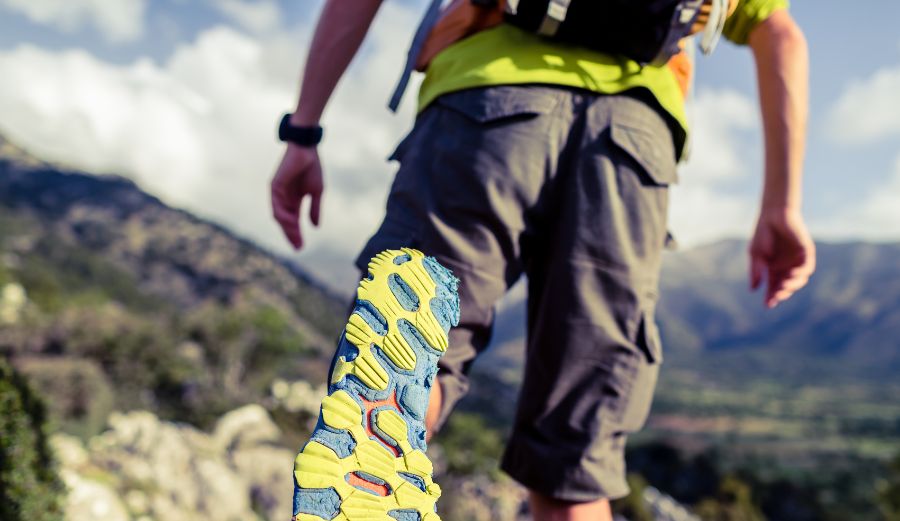
Trail running enthusiasts are embracing a transformative trend – running with a backpack. Explore the advantages and understand why this practice is gaining momentum:
Advantages of Incorporating a Backpack:
- Elevates running experience with dynamic challenges.
- An integral part of the journey, adding realism to workouts.
- Prepares for real-life scenarios by adapting to added resistance.
Enhanced Cardiovascular Endurance:
- The backpack’s weight prompts the heart and lungs to work harder.
- Boosts overall stamina for longer distances and more challenging routes.
- The cardiovascular system adapts to sustained exertion, improving endurance.
Strengthening of Muscles:
- Engages muscles throughout the body, especially the core, back, and lower body.
- Comprehensive muscle activation enhances overall strength and stability.
- Target muscles are often overlooked in traditional running routines.
Calorie Burn Amplification:
- Effective tool for weight loss due to increased energy expenditure.
- Elevated metabolic rate leads to higher calorie burn.
- Augmented workload fosters a favorable environment for fat loss.
Running with a backpack transcends conventional trail running, offering a holistic approach that nurtures endurance, strength, and calorie burn. This practice propels personal growth, pushing boundaries and unearthing untapped potential. As we delve deeper into the art of mastering backpack running, a wealth of insights awaits, poised to elevate your trail running journey to unprecedented levels.
Preparing for Backpack Running
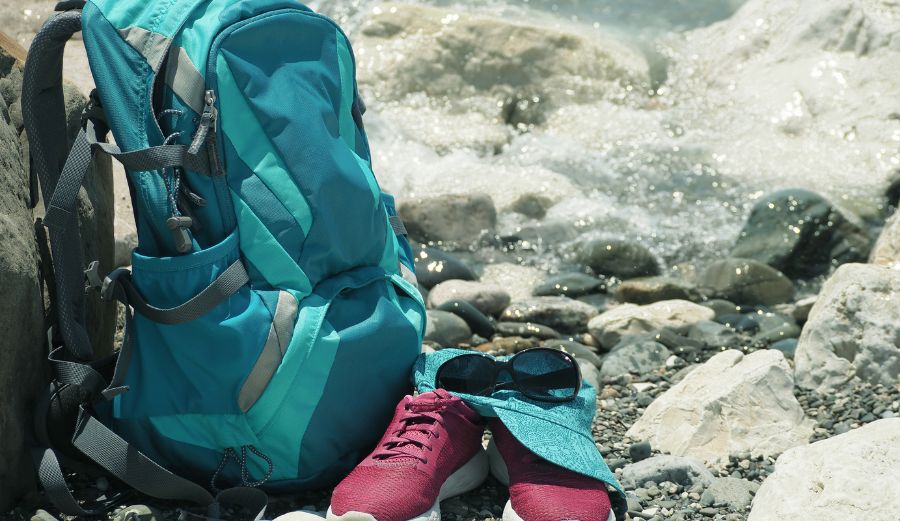
When embracing the challenges of backpack running, adequate preparation is the cornerstone of success. This entails paying meticulous attention to two crucial aspects:
Importance of Selecting the Right Backpack:
The significance of selecting a backpack of the appropriate size cannot be overstated. A well-fitting pack ensures comfort and prevents unnecessary movement during your run. This snug fit minimizes the risk of discomfort or chafing that can arise from an ill-fitting backpack.
Additionally, considering the backpack’s features, such as adjustable straps, compartments, and padding, is essential to tailor it to your needs and preferences.
Choosing Between Specialized Running Backpacks and Hydration Vests:
A pivotal decision awaits as you gear up for backpack running: Should you opt for a specialized running backpack or a hydration vest? Technical running backpacks offer ample storage and organizational options, accommodating items beyond hydration essentials.
On the other hand, hydration vests streamline your load, providing quick and easy access to fluids making them an attractive choice for shorter runs. Tailor your decision based on the demands of your trail run and your personal preferences.
In backpack running, thoughtful gear selection is the gateway to a successful and fulfilling experience. Choosing the right backpack and understanding the nuances of various options set the stage for a seamless journey on the trails.
Proper Fitting and Adjustment
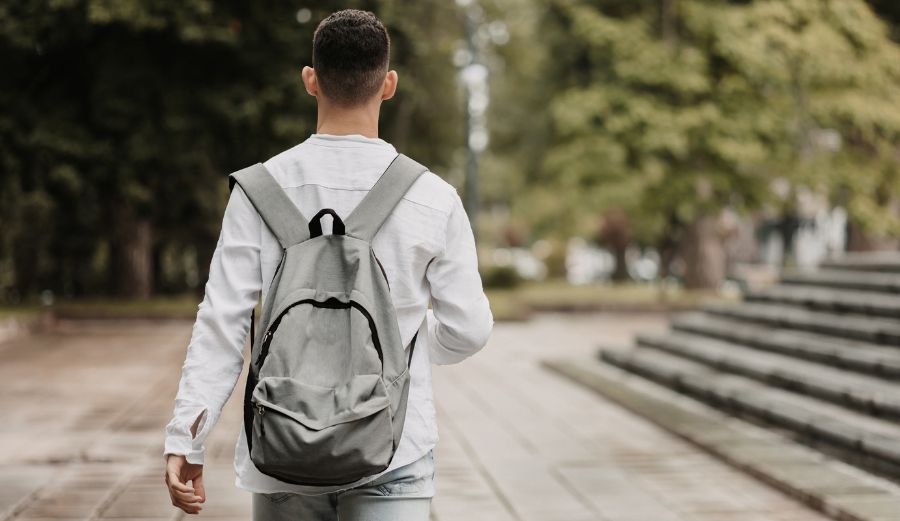
A harmonious fusion between your body and the backpack is paramount for a comfortable and practical run. Pay heed to the following elements for a seamless experience:
Detailed Steps on Fitting the Backpack:
- Strap Adjustment: Adjust the shoulder straps to achieve a snug fit. The backpack should rest comfortably on your shoulders without excessive pressure.
- Chest Strap: Fasten the chest strap to prevent the backpack from swaying. This promotes stability and minimizes strain on your shoulders.
- Waist Belt: Secure the waist belt around your hips, redistributing the weight to your lower body. This reduces strain on your back and ensures a balanced load.
- Shoulder Adjustment: Fine-tune the shoulder straps to avoid chafing and discomfort. Straps that are too tight can hinder your range of motion, while too loose can cause friction.
Effective Weight Distribution for Optimal Balance:
- Centralize Heavy Items: Place heavier items in the middle of the backpack, closer to your back. This centralizes the load, preventing imbalance and enhancing stability.
- Even Distribution: Distribute weight evenly between both sides of the backpack. Imbalanced weight can strain your body and affect your posture while running.
- Backpack’s Bottom Portion: Ensure that the heaviest items are positioned towards the bottom of the backpack. This prevents excessive strain on your shoulders and back.
- Core Engagement: Engage your core muscles to support your back and maintain proper posture. A strong core contributes to overall stability and efficient muscle engagement.
Achieving the ideal fit and weight distribution amplifies your backpack running experience. By following these steps, you optimize your comfort, balance, and overall performance on the trail.
Efficient Packing Techniques
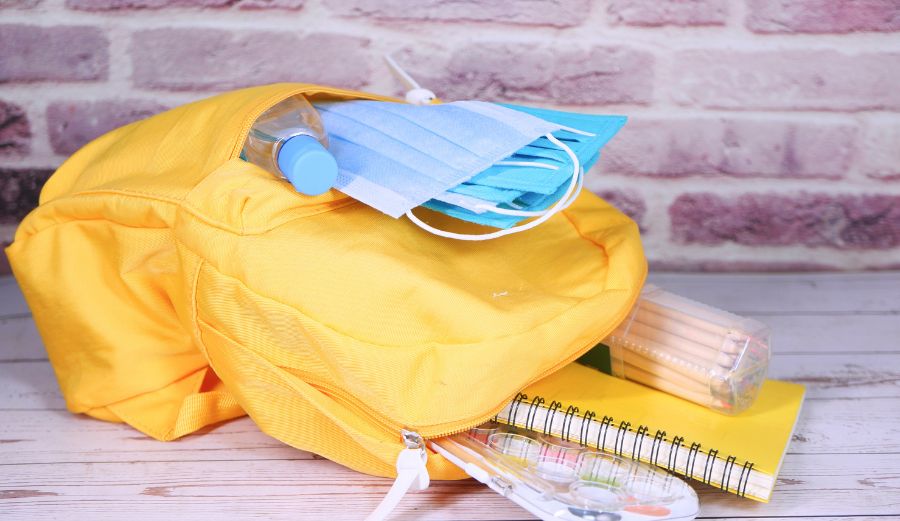
The art of efficient packing is a cornerstone of successful backpack running. Discover how to ensure a seamless and comfortable run by mastering these techniques:
Significance of Secure Packing:
Packing items securely isn’t just about preventing discomfort; it’s a strategic approach influencing your entire run. Securely packed items eliminate unnecessary bouncing and jostling, allowing you to maintain your rhythm and focus. This translates to reduced strain on your body and an overall smoother experience.
Strategies for Organizing and Distributing Items:
- Weight Distribution: Begin by placing heavier items closer to your back. This centralizes the weight, preventing the backpack from pulling you backward and ensuring optimal balance.
- Compartmentalization: Utilize the backpack’s compartments to organize items by their type and use. Keep essentials within easy reach and distribute the load evenly across different sections.
- Middle Weight Positioning: Position items of medium weight at the center of the backpack. This helps maintain stability and prevents the bag from sagging or shifting.
- Soft and Hard Items: Soft items like clothing should be placed against your back as a buffer between you and heavier or harder things. This adds comfort and prevents discomfort.
- Securing Straps and Buckles: Secure straps and buckles to prevent items from moving within the backpack. This prevents shifting that can throw off your balance.
Efficient packing transforms your backpack into a well-organized arsenal, optimizing your performance on the trail. By following these techniques, you’ll experience a run free from distractions, discomfort, and imbalanced loads.
Strengthening for Success

Elevate your backpack running prowess by fortifying your body’s foundation. Discover the pivotal role of muscle strengthening and explore tailored strategies for optimal performance:
Relevance of Strengthening Core, Back, and Upper Body Muscles:
A robust foundation is essential for conquering backpack running challenges. Strengthening core muscles enhances stability, aiding in maintaining proper posture and balance. Back muscles, often neglected, play a vital role in sustaining form during extended runs. Engaging upper body muscles contributes to overall power and endurance, enabling you to confidently navigate rugged trails.
Specific Exercises, Gym Routines, and Outdoor Activities:
- Core Strengthening: Incorporate planks, Russian twists, and bicycle crunches to target core muscles. Gym routines featuring cable rows and stability ball exercises provide comprehensive core engagement.
- Back Strengthening: Deadlifts, rows, and hyperextensions enhance back muscles. Yoga poses like Cobra and Superman engage and stretch the back effectively.
- Upper Body Engagement: Push-ups, pull-ups, and overhead presses bolster strength. Rock climbing and swimming offer engaging outdoor alternatives.
- Functional Training: Incorporate practical exercises such as farmer’s walks and woodchops to simulate real-life movements encountered during backpack running.
Strengthening is the bedrock of successful backpack running. By incorporating these exercises and routines into your training regimen, you equip yourself with the physical prowess necessary to easily conquer trails. Strengthen your body, elevate your performance, and embark on backpack running journeys like never before.
Mastering Technique and Posture
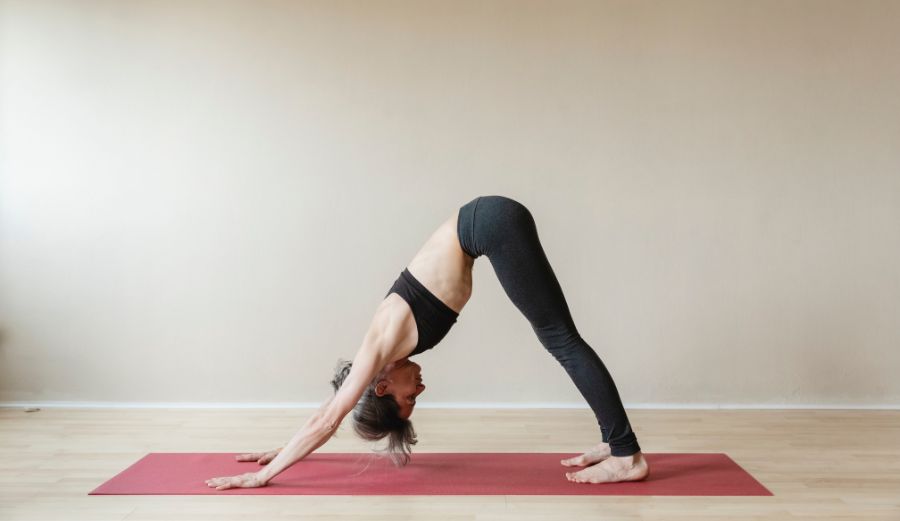
Unlock the secrets of efficient and injury-free backpack running by delving into the nuances of technique and posture. Elevate your running experience with these essential insights:
Crucial Role of Proper Posture and Technique:
- Injury Prevention: Maintaining correct posture and technique significantly reduces the risk of injuries. Proper alignment minimizes strain on joints and muscles, preventing discomfort and potential damage.
- Efficient Energy Utilization: Correct technique optimizes energy utilization, ensuring each stride propels you forward effectively. Proper posture prevents wasteful movements and conserves energy for longer runs.
Insights for Foot Placement, Stride Adjustment, and Leaning:
- Foot Placement: Land with a midfoot strike to distribute impact evenly. Avoid overstriding, which increases stress on joints. Adjust foot placement based on the terrain, ensuring stability and minimizing slips.
- Stride Length and Cadence: Maintain a moderate stride length and cadence for efficiency. Shorter, quicker steps reduce impact and enhance control, especially on challenging terrain.
- Leaning Technique: On uphill sections, lean slightly forward from your ankles to maintain momentum. For descents, lean back slightly to counterbalance and control your speed.
- Terrain Adaptation: Adapt your technique to various terrains. Flex your knees more on uneven surfaces to absorb shocks. On slippery paths, reduce your stride length for better traction.
Mastering technique and posture is the cornerstone of successful backpack running. By internalizing these insights and integrating them into your runs, you pave the way for injury prevention, energy conservation, and enhanced trail conquering. Elevate your running experience by mastering the art of efficient posture and technique.
Training Progression
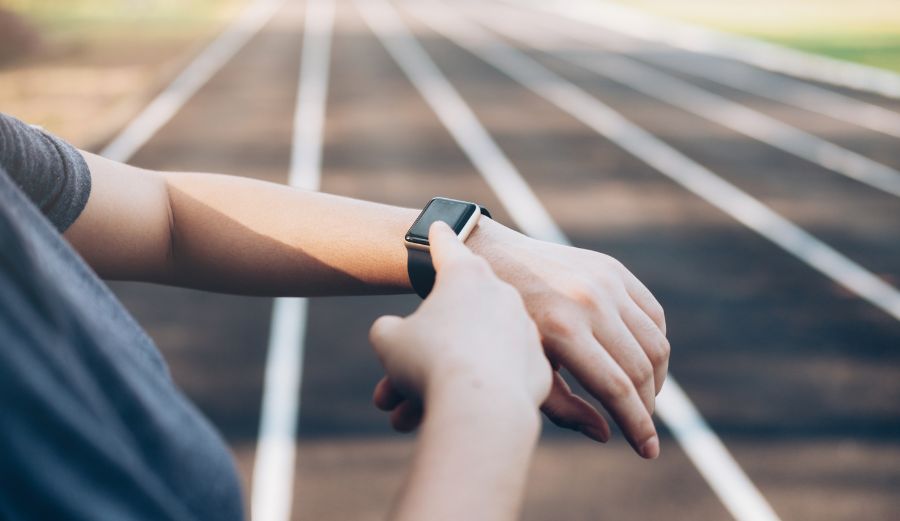
Embarking on a backpack running journey requires a strategic approach to build endurance and conquer challenges. Follow this gradual training plan and elevate your proficiency step by step:
Gradual Training Plan for Beginners:
- Foundation Building: Begin with shorter runs, focusing on adapting to the backpack’s weight. Start with a light load and gradually increase it as your body adjusts.
- Walk-Run Intervals: Incorporate walk-run intervals to ease into the new routine. Alternate between brisk walking and jogging, allowing your body to acclimate without excessive strain.
- Consistent Practice: Aim for regular practice sessions, gradually extending run durations. Prioritize consistency over intensity to ensure a solid foundation.
Tips for Progressing Distance, Speed, and Difficulty:
- Incremental Increases: Gradually increase your running distance by 10-15% per week. Avoid abrupt jumps to prevent overexertion and injuries.
- Pace Variation: Integrate tempo runs and interval training to enhance speed. Alternate between moderate and faster paces during your runs.
- Incorporate Hills: Introduce uphill and downhill segments to challenge different muscle groups. Gradually increase the intensity and duration of hill training.
- Load Variation: Experiment with varying backpack weights during training. Alternate between heavier and lighter loads to develop overall strength and adaptability.
- Recovery Days: Dedicate days to active recovery, focusing on stretching and mobility exercises. Allow your body to recuperate and prevent burnout.
As you progress through this training plan, you’ll witness significant growth in your backpack running capabilities. By adhering to a gradual approach, you minimize the risk of injury and ensure a sustainable journey towards mastering the art of backpack running.
Recovery and Injury Prevention
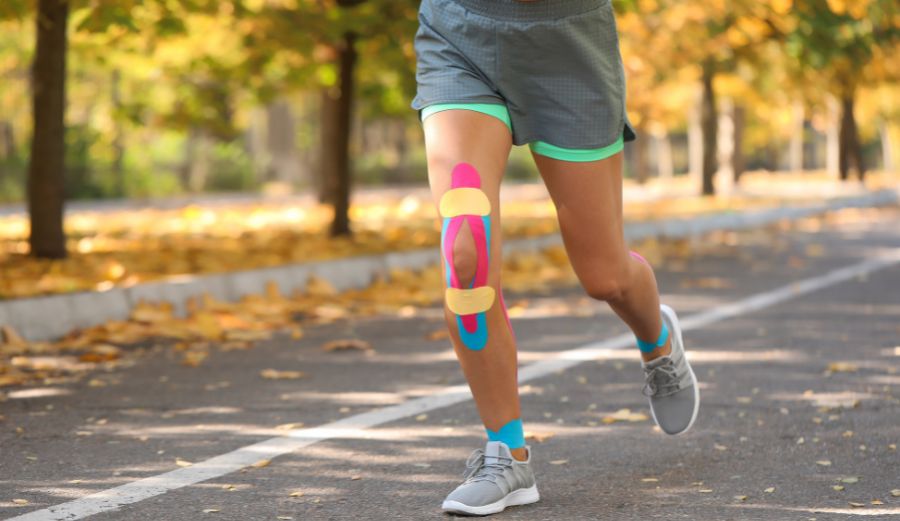
After the exhilaration of a backpack running session, prioritizing recovery is essential to sustain your performance and well-being. Explore the vital aspects of healing and practical techniques to ensure injury prevention:
Significance of Post-Run Recovery:
- Muscle Repair and Growth: Recovery allows muscles to repair and grow, improving performance in subsequent runs.
- Injury Prevention: Adequate recovery reduces the risk of overuse injuries and muscular imbalances caused by repetitive motions.
- Energy Restoration: Recovery helps replenish energy stores, ensuring you’re ready for future runs with optimal vitality.
Practical Techniques for Shoulder and Back Muscle Recovery:
- Stretching Routine: Incorporate shoulder and back stretches to alleviate tension and promote flexibility. Focus on stretches like arm crossovers and gentle backbends.
- Yoga Sequences: Engage in yoga sequences that target shoulder and back muscles. Poses like downward dog, cat-cow, and child’s pose provide soothing relief.
- Foam Rolling: Utilize foam rollers to release tightness in the shoulders and back. Roll gently over these areas to alleviate knots and muscular tension.
- Self-Care Practices: Prioritize self-care techniques such as hot/cold therapy or self-massage with a massage ball to enhance blood circulation and alleviate soreness.
Recovery isn’t just a phase; it’s an integral part of your backpack running journey. By dedicating time to effective recovery techniques, you safeguard your body and elevate your performance and enjoyment of each subsequent run. Let recovery become your secret weapon to achieving consistent and rewarding backpack running experiences.
Real-Life Application and Success Stories
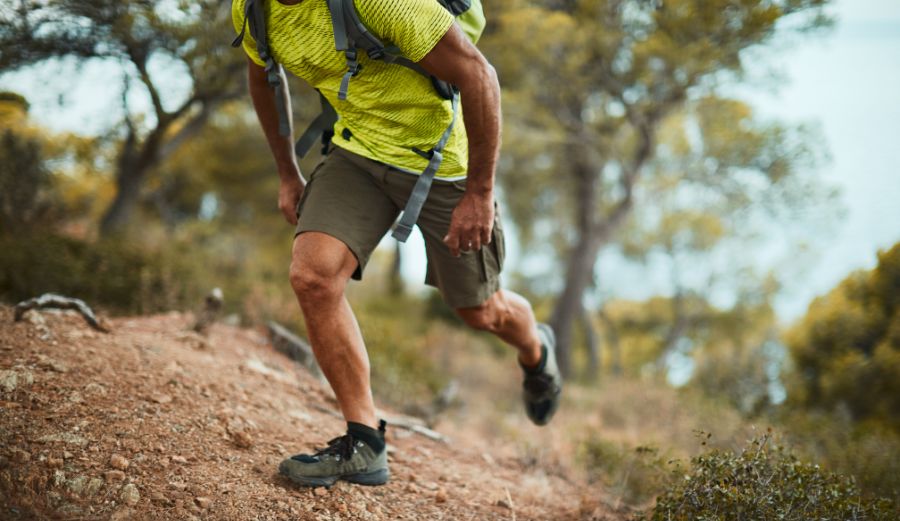
Embark on a journey through real-life tales of triumph and transformation as individuals harness the power of backpack running to elevate their trail running performance:
Inspiring Success Stories:
- From Novice to Trail Blazer: Sarah, a beginner in trail running, incorporated backpack running into her routine. Gradually, she conquered longer distances, fortified her muscles, and gained the confidence to tackle challenging terrains.
- Elevating Endurance: Mark, an experienced runner, sought to enhance his endurance. Through consistent backpack running, he witnessed remarkable improvements in his cardiovascular stamina, enabling him to tackle arduous trails with newfound vigor.
- Overcoming Challenges: As a fitness enthusiast, Emily faced setbacks due to overuse injuries. Embracing backpack running allowed her to diversify her routine, alleviate strain on specific muscle groups, and conquer injuries while staying engaged in her passion.
Fueled by Inspiration:
These stories illuminate the transformative potential of backpack running. As you venture into this world, remember that success stories are not confined to the elite; they’re attainable by anyone willing to commit. The challenges you face today are stepping stones to your own level of triumph.
Embrace the journey, overcome obstacles, and harness the power of backpack running to redefine your limits and celebrate your accomplishments. Your journey is waiting to be written – are you ready to be the author of your success story?
Wrap Up
The path to mastering backpack running techniques is paved with discovery, growth, and exhilaration. As we draw our journey to a close, let’s recap the valuable insights that will accompany you on your trail running adventures:
Key Takeaways and Benefits:
Enhanced Performance: Backpack running enriches your running experience, fostering endurance, strength, and calorie burn.
Injury Prevention: Proper technique, posture, and recovery techniques safeguard your well-being and longevity on the trails.
Steady Progression: Gradual training plans and strategic progression ensure consistent growth without compromising your body’s resilience.
Real-Life Application: Backpack running stories inspire and prove that success is attainable for individuals of all levels.
Embrace Your Journey:
Armed with these insights, you’re equipped to embark on a trail running adventure unlike any other. With every step, you embody the spirit of exploration and perseverance. The trails await your presence, ready to witness your evolution and celebrate your triumphs. Apply the knowledge gained, challenge your limits, and embrace the thrill of backpack running – your journey begins now. May the trails guide you towards endless horizons of discovery, accomplishment, and fulfillment. Happy running!
FAQs
Is It Good To Run With A Backpack?
Running with a backpack is an interesting and valuable thing. It will help you improve your overall fitness, but it can also cause some injuries if not done right. So make sure always to wear reflective gear on how to run with a backpack at night so that cars can see you!
When should you wear a running backpack?
Runners attempting long runs, races that don’t provide much hydration or no aid stations, competitions that aren’t self-sustaining, or runners on trails with no access to water should consider wearing a running backpack. It’s a clever method to transport both fluids and running essentials while maintaining your form.
Is Running With A Backpack Comfortable?
Running with a backpack can be pretty comfortable if you pack it the right way and ensure that running with a bag fits well. But as always, there are some downsides such as injuries which might happen, for example, shoulder pain or neck pain if done wrong. Make sure your shoulders aren’t too tight after running with a backpack because it might cause some injuries too.
Does Running With A Backpack Burn More Calories?
Running with a backpack will burn more calories than just running without one. You can compare it to weight training, where you are wearing weights in a pack while doing cardio exercises which is great for running with a backpack in the long run!
Will Running With A Backpack Prevent Injuries?
No, running with a backpack won’t prevent all injuries. You can still get hurt when wearing one or not if you don’t do everything right, so make sure to wear reflective gear how to run with a backpack at night to prevent injury from happening!
Does Running With A Weighted Backpack Build Muscle?
Running with a backpack will help you build muscle! It does so because you can compare it to weight training, where your muscles have to work much harder than usual, which is excellent for running with a backpack.
Does a sling bag good for running?
Ideal for leisure and outdoor trekking, camping, climbing, running, cycling, bike riding, etc. It’s also suitable for excursions to the amusement park or other places where your hands might be accessible while traveling or visiting.
What size running backpack do I need?
For a more pleasant ride, choose a running backpack that minimizes bounce and distributes the weight of your gear evenly across your back. If you have little storage space at work, look for a 20-liter running bag; get a smaller bag if you need less storage capacity.
Where should running backpacks sit on your back?
The center of gravity in your backpack should be two inches above your shoulders and not lower on your back. Many runners put their running pack low on the back, but doing so may cause imbalances while you run and cause you to lean forward, putting you at risk of back discomfort.
Can you injure your back wearing a backpack?
Backpack misuse may harm your back. Back or shoulder discomfort and other musculoskeletal problems can be caused by improper usage.1 1 Use and tighten the chest straps to avoid injury, and make sure your backpack doesn’t sway from side to side. It might cause chafing and back damage.
